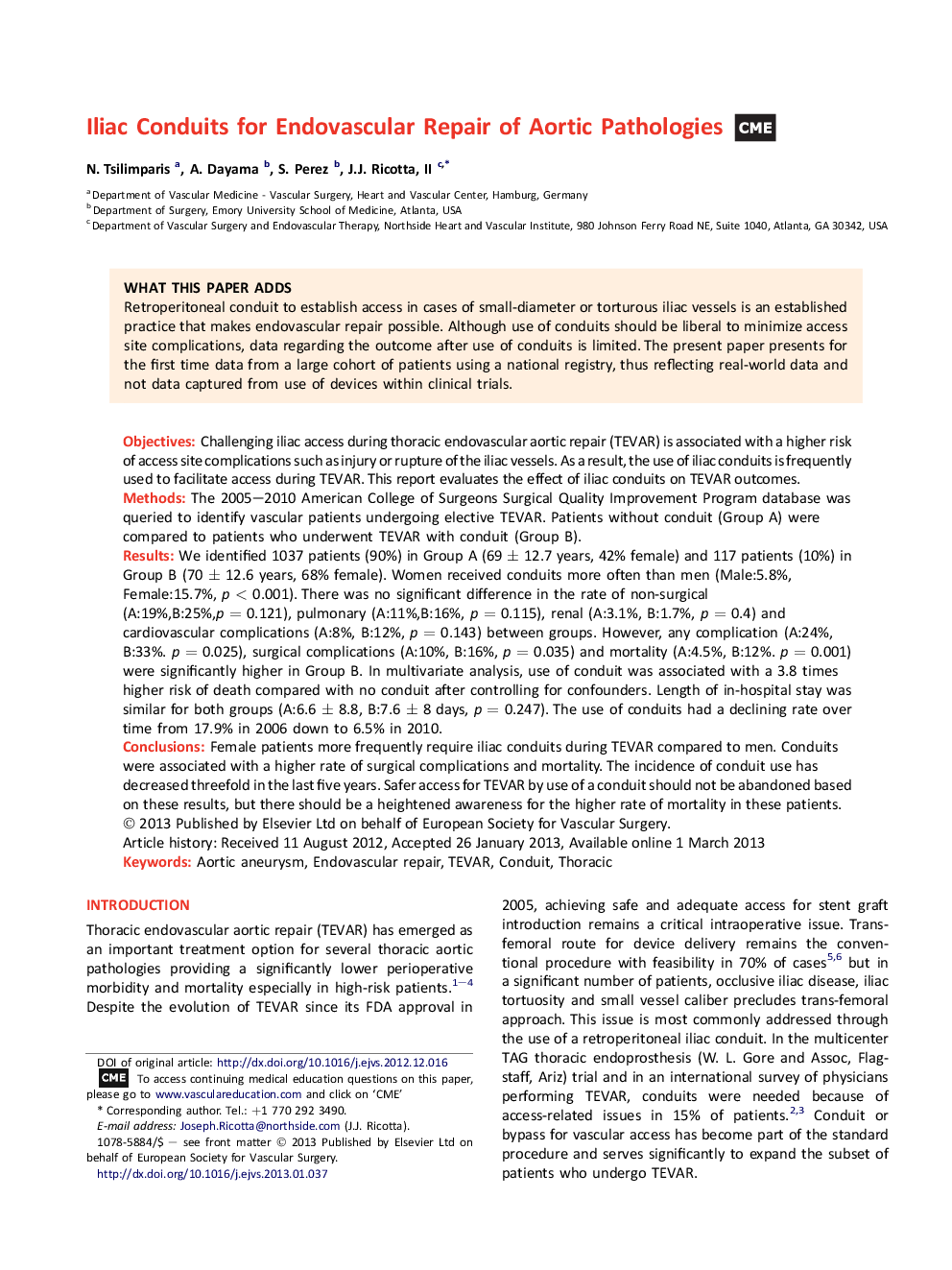| کد مقاله | کد نشریه | سال انتشار | مقاله انگلیسی | نسخه تمام متن |
|---|---|---|---|---|
| 2912088 | 1575466 | 2013 | 6 صفحه PDF | دانلود رایگان |

ObjectivesChallenging iliac access during thoracic endovascular aortic repair (TEVAR) is associated with a higher risk of access site complications such as injury or rupture of the iliac vessels. As a result, the use of iliac conduits is frequently used to facilitate access during TEVAR. This report evaluates the effect of iliac conduits on TEVAR outcomes.MethodsThe 2005–2010 American College of Surgeons Surgical Quality Improvement Program database was queried to identify vascular patients undergoing elective TEVAR. Patients without conduit (Group A) were compared to patients who underwent TEVAR with conduit (Group B).ResultsWe identified 1037 patients (90%) in Group A (69 ± 12.7 years, 42% female) and 117 patients (10%) in Group B (70 ± 12.6 years, 68% female). Women received conduits more often than men (Male:5.8%, Female:15.7%, p < 0.001). There was no significant difference in the rate of non-surgical (A:19%,B:25%,p = 0.121), pulmonary (A:11%,B:16%, p = 0.115), renal (A:3.1%, B:1.7%, p = 0.4) and cardiovascular complications (A:8%, B:12%, p = 0.143) between groups. However, any complication (A:24%, B:33%. p = 0.025), surgical complications (A:10%, B:16%, p = 0.035) and mortality (A:4.5%, B:12%. p = 0.001) were significantly higher in Group B. In multivariate analysis, use of conduit was associated with a 3.8 times higher risk of death compared with no conduit after controlling for confounders. Length of in-hospital stay was similar for both groups (A:6.6 ± 8.8, B:7.6 ± 8 days, p = 0.247). The use of conduits had a declining rate over time from 17.9% in 2006 down to 6.5% in 2010.ConclusionsFemale patients more frequently require iliac conduits during TEVAR compared to men. Conduits were associated with a higher rate of surgical complications and mortality. The incidence of conduit use has decreased threefold in the last five years. Safer access for TEVAR by use of a conduit should not be abandoned based on these results, but there should be a heightened awareness for the higher rate of mortality in these patients.
Journal: European Journal of Vascular and Endovascular Surgery - Volume 45, Issue 5, May 2013, Pages 443–448